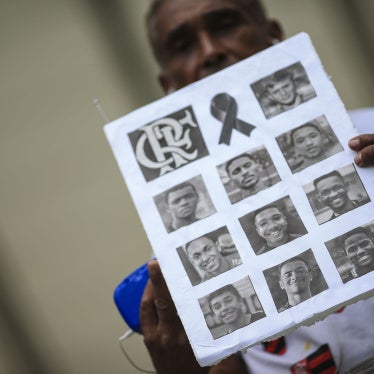On a June day in 2016, Ruth Montenegro said goodbye to her daughter, 11-year-old Valentina, as she headed to school. Valentina was planning to go to her orchestra practice that afternoon—she played the flute at the Symphonic Orchestra of Ecuador’s conservatorium— and return home to help her younger sister decide what she would wear for her birthday party. But she never made it to orchestra practice.
Montenegro and her husband went to the police, but instead of searching for her, the officers asked if Valentina may have wanted to leave voluntarily, and sent her parents away. They spent all night searching for Valentina.
The following morning, Montenegro got a phone call from the school. When she arrived, she saw her daughter’s body on the floor, covered by a blanket. School authorities first suggested Valentina’s death was an accident, and then that Valentina had committed suicide because her parents were getting a divorce, Montenegro said.
A forensic expert who participated in the first autopsy initially told Montenegro that Valentina had been raped and strangled, but then abruptly reversed course after receiving a phone call and told Montenegro that “she was very sorry” but there had been a “mistake” and Valentina’s death was an “accident.” The prosecutor subsequently rushed the family to take the body from the morgue and bury it, Montenegro said.
The body was exhumed weeks later. The investigation eventually yielded evidence that Valentina had been sexually abused and killed, and that her body was later placed near the school playground, where it was found, Montenegro told me. Valentina’s death is still under investigation.
Valentina’s case is not an isolated one. A series of recent scandals have shaken Ecuadorean society, revealing that sexual violence of children is much more widespread than many people had been willing to acknowledge.
After years in which the Ecuadorean government failed to acknowledge the scope of the problem, the new government of Lenin Moreno responded to the publicity the recent cases received by doing precisely that. The new education minister, Fander Falconí, said that the ministry had registered 882 alleged cases of sexual violence against children between 2014 and 2017, including 561 incidents linked to the public education system.
In November, the president of the Judiciary Council, Gustavo Jalkh, said that during the same period, prosecutors had received 4,864 complaints of sexual violence against children—of these, 2,264 had moved on to trial, and 1,653 had led to a ruling, without specifying whether they were convictions. Also in November, the Attorney General’s Office said it would reopen 82 investigations of allegations of sexual violence against children that had been archived since 2015, in response to a request from the Education Ministry.
And these are just the cases that have been reported. According to UNICEF, based on official statistics, victims only file complaints in about 15 percent of sexual violence cases in Ecuador.
UNICEF has reported that world-wide around 15 million adolescent girls aged 15 to 19 have experienced forced sex in their lifetime, including nine million who have been victimized over the past year. In 28 surveyed countries, nine out of 10 adolescent girls who have experienced forced sex say this happened for the first time during adolescence. Based on data from 30 countries, only one percent of victims reached out for professional help.
To make matters worse, abortion in Ecuador is legal for women and girls only when their health or life is at risk, or when the pregnancy results from the rape of a woman with a mental disability. This means many adolescent girls who become pregnant as a result of rape cannot access safe and legal abortion, and must turn to illegal abortion or continue those pregnancies.
The Convention on the Rights of the Child, ratified by Ecuador in 1990, obliges state parties to take all appropriate measures to protect children “from all forms of physical or mental violence, injury or abuse, neglect or negligent treatment, maltreatment or exploitation, including sexual abuse.”
In September 2017, the UN expert body that assesses government compliance with the Convention declared that it was “extremely concerned about the prevalence of gender-based violence, in particular sexual violence,” about “the high level of impunity in cases of sexual violence” affecting children in Ecuador, and “the high rate of teenage pregnancy, frequently as a consequence of sexual violence.”
A progressive dismantling of specialized institutions to protect children in recent years has contributed to this situation, said local activists who submitted a shadow report to the committee.
The experts urged the government to adopt a “nationwide strategy to eliminate sexual violence against girls,” and ensure they have “access to sexual and reproductive health services, including therapeutic abortion” and “access to effective complaint mechanisms.” They also called on the government to “introduce compulsory screening processes and background checks” of staff working in public and private schools and “expedite judicial proceedings against alleged perpetrators of sexual violence.”
Ecuadorean authorities appear to be taking the issue more seriously. The education minister has acknowledged the scope of the problem and the need to address it. The National Assembly has created a special commission to investigate these cases. President Moreno has said that he wants to include a question in his proposed referendum to ask Ecuadoreans if they support eliminating statutes of limitations for investigating and prosecuting sexual violence against children.
With tears in her eyes, Montenegro told me she wanted justice and that she wants to ensure that “this doesn’t happen again to any other person or family.” It is critically important for Ecuadorean authorities to turn words into actions, and create a comprehensive and adequate system to protect children from sexual violence.








